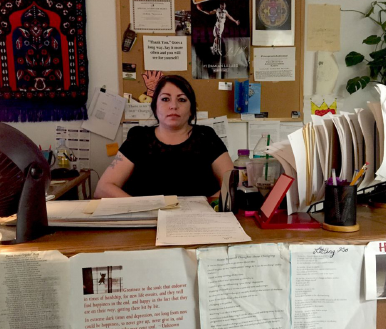Closing The Communication Gaps In The Criminal Justice System: Code For America Lands In Salt Lake County
Time to read:
This post is part of Twilio’s archive and may contain outdated information. We’re always building something new, so be sure to check out our latest posts for the most up-to-date insights.

In a row of dominoes, failure to appear is the last domino to fall. In the criminal justice system, a defendant’s failure to appear (FTA) in court is a costly problem, one that can’t be solved by examining the last domino in a vacuum.
To case managers in Utah’s Salt Lake County, context is crucial in understanding how and why a client fails to appear. But, context is hard to come by. Locating clients, building trust, and keeping them on the straight and narrow was an uphill battle for case managers before Code For America (CFA) fellows landed in Utah.
In early 2016, the Code for America team arrived in Salt Lake County with the mission of reducing the FTA rate. The Code For America team’s solution to a complex problem was remarkably simple – let case managers and clients text each other.
A year later, Code For America’s Twilio + IBM Watson powered solution, ClientComm, is now a vital part of case managers’ work, and a lifeline to many of their clients.
This how they built it.
Ditching Phone Tag

Code for America fellows Kuan Butts and Ben Peterson zeroed in on asynchronous communication as a solution to case managers’ problems. They built a web-based Twilio app that allowed case managers to text their clients from their browser. This immediately crossed phone tag and manual data entry off of case managers’ to-do lists. That was a bonus. The real value of SMS was being able to reach clients.
Case Managers Build Bonds with Clients
High risk clients might change their number, change their address, or become homeless. These burdens can make it hard for a case manager to track down a client, let alone communicate with them on a regular basis. Thanks to the Lifeline Program, which gives low income residents subsidized access to phones, many clients have cell phones.
“Clients use of technology varies, but SMS phone possession and text message use is high,” reports Kuan Butts.
The Code For America team was confident in the medium of communication they chose, and the technology that powered it. That was a matter of engineering. The communication between client and case manager, was more delicate.
Asynchronous Communication Opens Up Clients to Case Managers
ClientComm was a hit with Salt Lake County case managers, and their clients alike. 85% of case managers elected to use ClientComm, 55% of whom use it daily. The impact of daily asynchronous, immediate communication has not gone unnoticed by clients.
“Normally, when I wouldn’t before, I’m getting the type of communication I’m hoping for — being more open and asking for help,” reported one case manager.
“This has been critical for me to keep up with my clients. If it wasn’t for ClientComm, I wouldn’t have been in touch with so many of my clients,” said a Salt Lake County case manager.
Prior to ClientComm, clients in crisis couldn’t communicate with or open up to their case managers after close of business. Their relationship was relegated to office hours. ClientComm changed those hours, and the relationships between client and case manager.

ClientComm’s Twilio SMS inbox is 24 hours. Having the option to communicate via SMS enabled clients to open up to their case managers, asynchronously.
“I have a few clients that I get quite a few texts from. Some of them it’s their primary form of communication. I have one client that has been on probation since April and he texts all the time if he has to do a drug test, he texts and asks, ‘What was my result?’ He’s just very open with stuff over text,” said a Salt Lake County Case Manager.
The Force of Thousands of Conversations
A year after Code For America landed in Salt Lake County, the landscape has changed. Code For America helped raise the success rates of clients who are awaiting trial in the community from 50% to over 80%.
No man (or team) is an island. Clients, case managers, and the Salt Lake County government all worked to boost probation department success. Failure to appear rates are down significantly. Case managers have contacted over 1,900 clients using ClientComm.
Based on this initial success, Code for America is making a long term bet on ClientComm to help keep individuals who get in trouble from cycling back into jail, and is hiring a team to spread the tool to local courts and probation departments around the country.
In Kuan and Ben’s report, you can comb through a litany of metrics outlining ClientComm’s success. In between data are the case managers and clients of Salt Lake County. You can’t quite reduce them into points you’d chart on a graph. But if you could, I’d hazard a guess they’d be closer now than they were before Kuan and Ben landed in Utah.
Related Posts
Related Resources
Twilio Docs
From APIs to SDKs to sample apps
API reference documentation, SDKs, helper libraries, quickstarts, and tutorials for your language and platform.
Resource Center
The latest ebooks, industry reports, and webinars
Learn from customer engagement experts to improve your own communication.
Ahoy
Twilio's developer community hub
Best practices, code samples, and inspiration to build communications and digital engagement experiences.